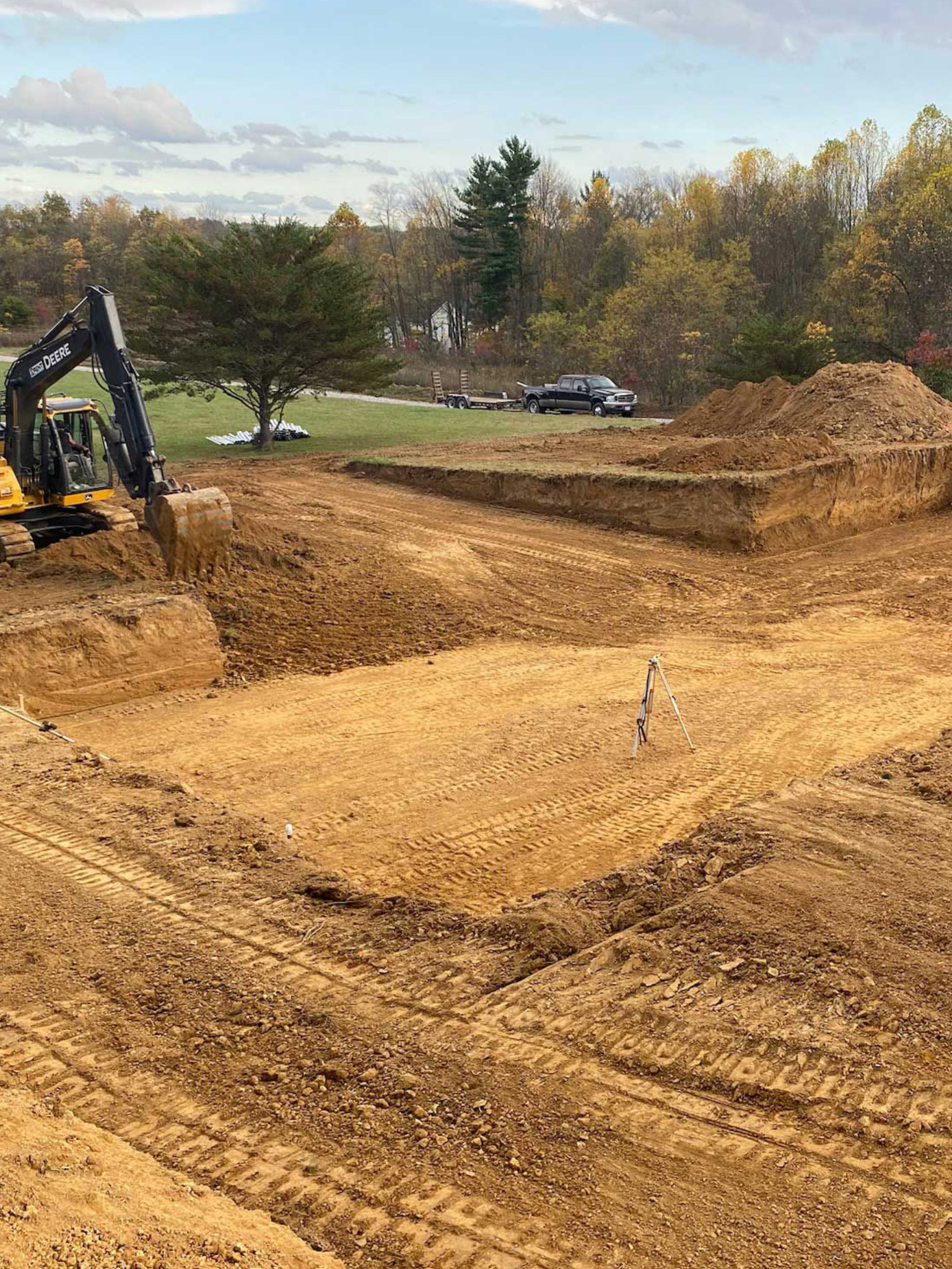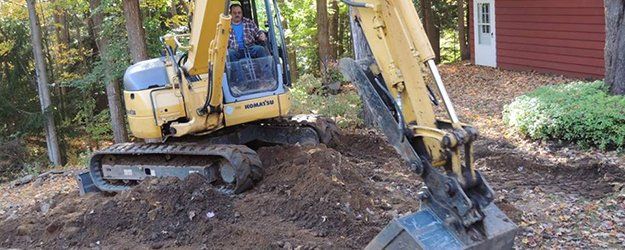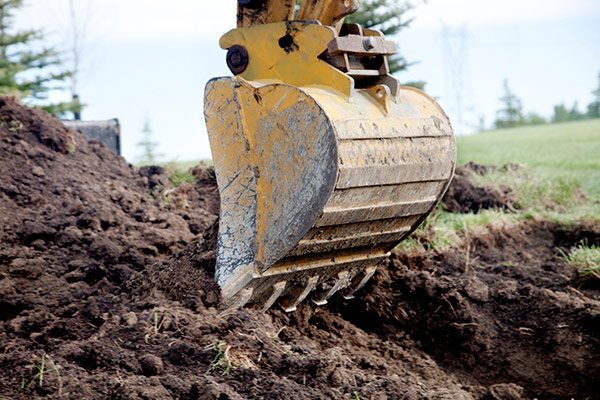Ideal Dump Truck Companies in Ohio - Top-Rated Dump Truck Providers
Ideal Dump Truck Companies in Ohio - Top-Rated Dump Truck Providers
Blog Article
Comprehensive Expedition: The Science Behind Superior Excavation Practices
The realm of excavation methods is a domain name where science intertwines with craftsmanship to uncover the enigmas hidden under the earth's surface area. From ancient hand tools to modern hydraulic excavators, the advancement of excavation techniques has been a testimony to human ingenuity and technical advancements. What truly sets premium excavation techniques apart is a deep understanding of geological principles, coupled with the utilization of advanced devices and techniques. By checking out the scientific research behind these techniques, we can reveal the secrets that lie underneath our feet and appreciate the accuracy and proficiency that go right into every dig.
Development of Excavation Strategies
Throughout background, the evolution of excavation methods has actually played a crucial duty ahead of time building techniques and archaeological discoveries. From the primary devices made use of by our ancestors to the innovative equipment utilized in modern-day times, the progression of excavation techniques has actually substantially changed exactly how we approach different tasks.
In old times, manual work with standard devices such as wheelbarrows, pickaxes, and shovels was the key approach of excavation. This labor-intensive process restricted the deepness and range of excavations, often causing sluggish progression and restricted access to certain sites. Nevertheless, as civilizations advanced, so did the strategies and devices made use of for excavation.
The Industrial Revolution noted a transforming point in excavation techniques with the introduction of steam-powered equipment. In contemporary times, technology plays a crucial duty in excavation, with improvements like GPS systems, drones, and 3D scanning enhancing accuracy and efficiency in the area.
Duty of Modern Technology in Excavation

The integration of innovative innovation has essentially transformed the field of excavation, improving accuracy and effectiveness to unprecedented levels. One of the vital technical improvements that has substantially affected excavation methods is the usage of GPS systems. These systems enable for precise mapping of excavation sites, allowing operators to properly find underground energies and structures. Additionally, making use of telematics in excavation devices has enabled real-time tracking of device efficiency, bring about proactive maintenance and boosted operational performance.
Additionally, the advent of 3D modeling and simulation software has streamlined the planning process for excavation projects. Operators and designers can now visualize the whole excavation process prior to beginning, maximizing and identifying possible difficulties operations. Along with this, the application of drones in excavation tasks has assisted in aerial studies, volumetric measurements, and site examinations with unparalleled rate and precision.
Geological Concepts in Excavation
An understanding of geological principles is important for making sure the structural honesty and security of excavation websites. Geological aspects play a crucial role in identifying the expediency and safety and security of excavation projects (lancaster trenching). One vital geological principle to consider is the kind of dirt or rock existing at the website. Various soil types, such as sand, clay, or gravel, have varying levels of stability and call for different excavation strategies. As an example, natural soils like clay may need extra support to avoid collapses, while sandy dirts might be susceptible to disintegration during excavation.
Furthermore, the geological framework of the location, including faults, cracks, and rock formations, try this should be carefully examined to recognize potential risks and challenges. Excavating near geological fault or unstable rock developments can bring about instability and potential risks. By you can try this out performing comprehensive geological studies and analysis, excavators and engineers can establish strategies to mitigate dangers and guarantee the successful conclusion of excavation tasks. Ultimately, integrating geological principles into excavation techniques is critical for accomplishing risk-free, effective, and sustainable outcomes.
Newest Tools for Excavation
In the world of excavation methods, contemporary innovations in tools have changed the performance and accuracy of excavation procedures. One of the current tools making waves in the market is the usage of drones outfitted with innovative imaging modern technology. These drones can supply in-depth aerial surveys of excavation sites, using real-time data on topography and potential threats. This information aids in much better planning and decision-making throughout the excavation procedure.
Another cutting-edge device obtaining popularity is the execution of 3D printing technology for creating personalized excavation tools. This enables the production of specialized tools that are tailored to the details requirements of a job, raising effectiveness and minimizing downtime.
In addition, advancements in materials scientific research have led to the development of more powerful and much more sturdy excavation devices. excavating ohio. Tungsten carbide-tipped excavator attachments, as an example, offer premium performance in difficult ground problems, enhancing efficiency on-site
Scientific research's Effect on Excavation Practices

Additionally, improvements in products scientific research have caused the production of more powerful, a lot more durable excavation devices and tools. The use of composite materials in shovels and diggers has actually improved their efficiency and long life, ultimately increasing performance on excavation websites. In addition, clinical research on soil auto mechanics and geotechnical engineering has actually given useful understandings right into soil habits, permitting excavation professionals to make educated choices relating to excavation approaches and soil stablizing strategies. Generally, scientific research continues to drive development and enhancement in excavation techniques, making excavation projects much more efficient, cost-effective, and sustainable.

Verdict
To conclude, the advancement of excavation strategies has actually been considerably affected by advancements in innovation and a deeper understanding of geological concepts. The current tools and tools utilized in excavation have boosted performance and precision in the field. The application of scientific knowledge has significantly boosted excavation techniques, leading to extra sustainable and effective techniques for digging deep into various kinds of materials.
In the world of excavation practices, modern innovations in devices have actually revolutionized the performance and precision of excavation procedures. By leveraging clinical principles, the excavation sector has been able to significantly enhance performance, precision, and safety in excavation procedures. GPR allows excavation groups to non-invasively scan and map subsurface frameworks, utilities, and prospective dangers, enabling them to intend excavation tasks with greater accuracy and lowered risk of accidents.
Additionally, scientific research study on soil mechanics and geotechnical design has actually offered beneficial insights right into dirt behavior, enabling excavation professionals to make educated choices concerning excavation techniques and dirt stabilization techniques. On the whole, science continues to drive advancement and enhancement in excavation practices, making excavation tasks more effective, economical, and sustainable.
Report this page